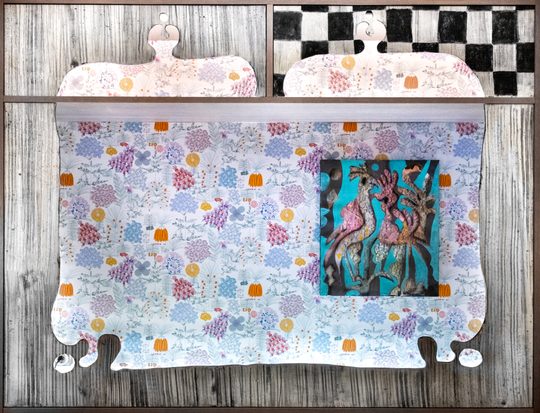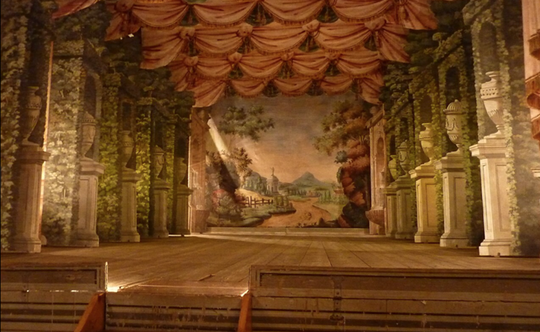Baroque Stages

From European antiquity to the Middle Ages, theater performances were generally held outdoors. It wasn’t until the 17th century that the typical interplay between the proscenium stage and the auditorium emerged in theater buildings. In such a Baroque theater, the illusion of spatial depth was a central element of the performance. Staggered side scenes, hanging soffits, and a closing backdrop created the stage set, which could be changed quickly.


The two stage sets in the Wunderkammer Voliere, titled Stage Cages for Performing Birds, also present such illusory spaces. Created by József Csató, they are purely painted works. The painted portal frames evoke oriental luxury tents and historical birdcages, "inhabited" by canvas paintings of peculiar birds (Story of a Bench). The backdrops in the scene include a red, thinly checkered field on the left stage and, on the right double-stage, the Blütengarten wallpaper by Felice Rix-Ueno. Both are illuminated by LED strips, making them strikingly "flat." Instead of a Baroque illusion of space, they present the flatness of modernity.

